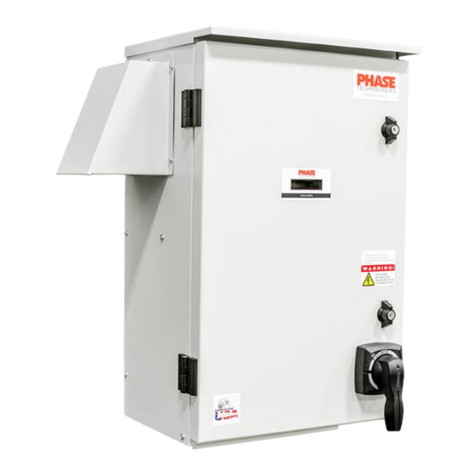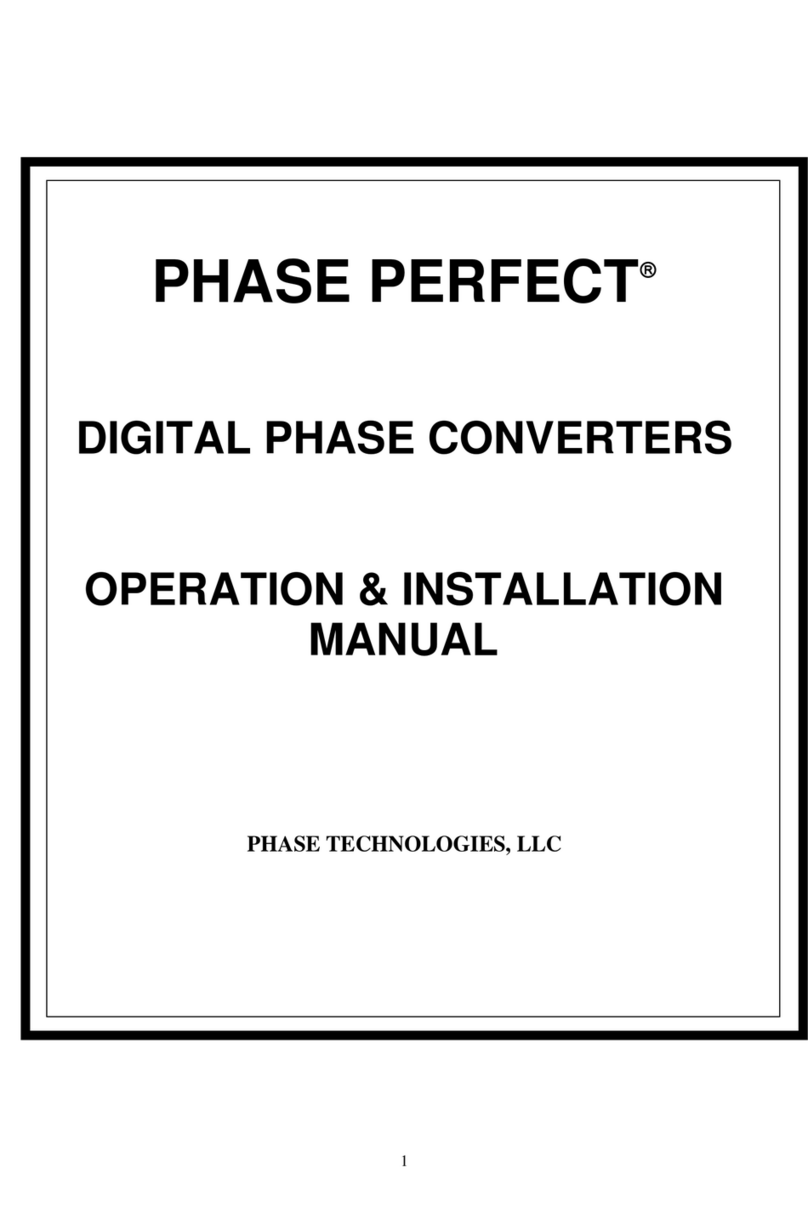
vi | Page
V4.1
TABLE OF CONTENTS
THEORY OF OPERATION .......................................................................................... 1
BLOCK DIAGRAM........................................................................................................ 1
MODELS AND RATINGS ............................................................................................ 2
SPECIFICATIONS ....................................................................................................... 3
GENERAL SPECIFICATIONS ......................................................................................... 3
ELECTRICAL SPECIFICATIONS ..................................................................................... 3
MECHANICAL SPECIFICATIONS .................................................................................... 5
INSTALLATION........................................................................................................... 7
MOUNTING YOUR NEW PHASE PERFECT ..................................................................... 7
MOUNTING BRACKET INSTALLATION ............................................................................ 7
NEMA 3R RAIN HOODS ............................................................................................. 7
PROPER VENTILATION ................................................................................................ 7
SERVICE ENTRANCE EQUIPMENT ................................................................................ 7
SOURCE BRANCH CIRCUIT PROTECTION...................................................................... 7
GROUNDING ..............................................................................................................8
GENERATOR POWER................................................................................................ 10
WIRE SIZING ........................................................................................................... 10
CONNECTING THE LOAD ........................................................................................... 10
CONNECTING TO FIELD WIRING TERMINALS ............................................................... 13
ROUTING POWER CABLES ........................................................................................ 15
ON/OFF CONTROL WIRING ....................................................................................... 17
OPERATION.............................................................................................................. 19
LCD STATUS SCREEN.............................................................................................. 19
DIP SWITCH SETTINGS ............................................................................................ 19
BYPASS AUX INPUTS ............................................................................................... 20
ENABLE VFD MODE................................................................................................. 20
VOLTAGE CALIBRATION ............................................................................................ 20
TRANSFORMER MODE .............................................................................................. 21
ELEVATOR MODE..................................................................................................... 22
STARTUP DELAY ...................................................................................................... 23
INFINITE RESTARTS.................................................................................................. 24
FAULT CODES ......................................................................................................... 25
FAULTS:MANUAL RESTART ...................................................................................... 26
FAULT LOG.............................................................................................................. 26
TROUBLESHOOTING TIPS ...................................................................................... 27
ROUTINE INSPECTION AND MAINTENANCE ......................................................... 28
LINE FILTER CAPACITORS......................................................................................... 28
FUSES .................................................................................................................... 31
MOTOR STARTING/OVERLOAD CAPABILITIES .................................................... 33
DIMENSIONAL DRAWINGS...................................................................................... 37
NOTES....................................................................................................................... 46
WARRANTY POLICY ................................................................................................ 47






























